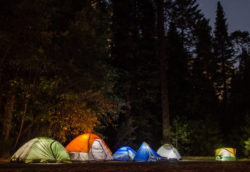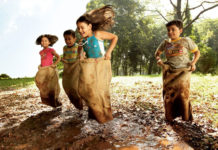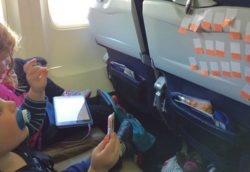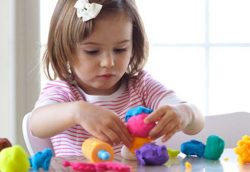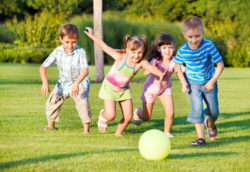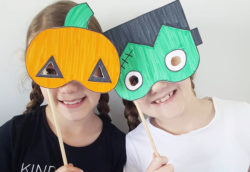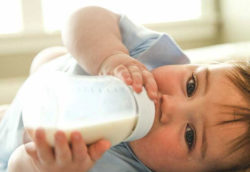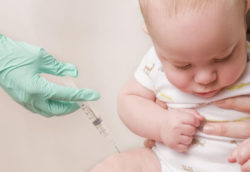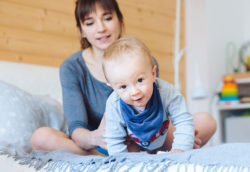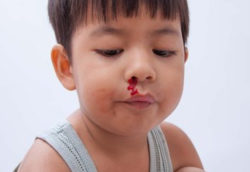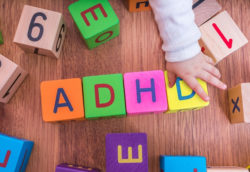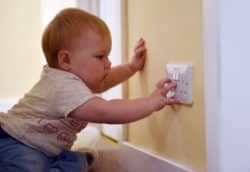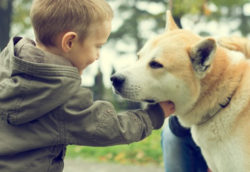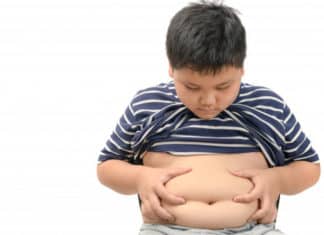Teaching a child first aid is your top most priority. Yes, you won’t always be near your little one when they get hurt. But teaching kids important first aid tips and basic skills of first aid, you are facilitating them with the ability to help themselves or others in case of an injury in the meantime while they seek for external help. Kids have a tremendous capacity to learn and such tips can help them save a life.
After all, they soon get to know that life is all about hurdles and they are bound to have tumbled. Give them the power to fix any boo-boo fast by teaching them the below!
How To Teach First Aid Tips to Kids
1. Call 911:
There was a time when we had a different number for each type of emergency. But now we are equipped with the power of 911 which lets us to a central number of all types of emergencies. Everyone needs to know to call 911 for an emergency. But basic first aid for kids starts from the need to know what “emergency” means. You must ask your child various questions to your child like “what would you do if our house catches fire?” or “what will you do if someone tries to break through the house”. Role-playing usually gives your kid confidence that they will be able to deal with such a situation. For younger children, of course, it might be helpful to talk about the “emergency helpers” in your society are like the police officer, the firefighters, paramedics or doctors, and nurses, etc. And teaching them the kind of help can each of these providers in trouble. This clarifies not only the type of emergency that can occur but also who should help in such cases.

-
When to teach kids to call 911?
When kids are old enough to know to speak, know their numbers, they are old enough to call 911. As a primary step, a parent must program 911 to the speed dial always on every home phone and teach the kids about the same. Paint the button with red nail polish so that the kids remember it.
-
When can you call 911
Understanding an emergency is also to know what is not. Fire, an intruder at home, or an unconscious member of the family, etc. are called emergency situations, and these need a call at 911. However, if you lose a toy, or hurt your knee while playing, or if your pet is lost, they do not come under emergencies. Still, teaching your kid to ask the elders around before making the call when in doubt is a sensible thing to do. Always better to be safe than sorry. Tell kids that calling 911 as a joke is a crime in many places. And also teach them how important these calls are, and if they make an unnecessary call to 911, it can delay the response to some in actual need of help. Although, most of the 911 calls now are traced. However, it is important for your kid to know the street and address where they live. Keep your address handy next to the landline or put it on the cell phone guiding the child to find it. Also they kid must know that they have to give all this information to the operator to confirm so that no time is lost in sending help. Let your kids know that these personal details must never be shared with strangers, but it is okay to trust the 911 operators.

First aid training for kids must also include the basic questions that the 911 operator might ask:
-
- Where are you calling from? (Where do you live – the name of the place, street, and address?)
- What type of emergency is this situation?
- Who needs help and why?
-
Is the person conscious and breathing?
Teach kids that it is okay to be nervous in case of emergencies but it is important to stay calm and find the solution or seek help. You must give as much information as possible to the 911 operator to be able to help you with the best possible way. Instruct the kid not to hang up the 911 call until the person on the other end says they have all the information they need to help and are hanging up.
2. How to Stop Bleeding:

To begin with, important first aid tip to teach kids is to put pressure on the wound as soon as they see blood. The most wound must stop with the pressure, however, ask them to waddle-up a cloth and press it down with the base of the hand or with a bare hand if they do not find a clean cloth immediately. It might take from 2-3 minutes to even 15 minutes. Teach them to clean the wound with lukewarm running water and gently pat to dry. They must always rinse the wound with gentle lather when dirty or due to an animal scratch.
In case of the skin with a deep wound, teach them about the antibiotic ointment and how to use them by applying a layer on the wound. Cover the wound with bandage or gauze. Tell them if they are still the bleeding does not control as the wound is a deeper one, it is alright to seek help by calling 911 or pediatrician. Very importantly, if a large piece of skin has been removed, ask the kid to wrap it up in a clean, moist cloth and place it in a bag over ice – the doctors can re-attach the skin if it is taken care of. And in all these cases, they must inform the parents/ elders and seek their help too or show it to a doctor immediately.
In case the kid is helping another person, they must find plastic to cover their hand and do not come in direct contact with the blood. Or ask them to dab their wound and check if the blood stops, if not, follow the process mentioned above.
The aftercare must also be told to the kids so that they do not fiddle with the wound and make it worse. Teach them to keep the wound clean by applying antibiotic cream or liquid on the wound and tie it with a new bandage every day until the cut heals. In case they see pus draining or any development of swellings, suggest seeing a doctor right away to treat the infection.
3. Take a CPR Training R:
 Although the kid needs to have enough pressure and strength to be able to add pressure to the chest, it is okay to teach them how to do it. Tell them this is called Cardiopulmonary Resuscitation (explain the term if possible), which should be provided if someone is not breathing. It is also suggestible to take your family to the CPR course to be aware of how it’s done. There have been many cases where the kids have been able to save lives since they knew how it is done. This is best to prevent irreversible brain damage or death in case of cardiac arrest.
Although the kid needs to have enough pressure and strength to be able to add pressure to the chest, it is okay to teach them how to do it. Tell them this is called Cardiopulmonary Resuscitation (explain the term if possible), which should be provided if someone is not breathing. It is also suggestible to take your family to the CPR course to be aware of how it’s done. There have been many cases where the kids have been able to save lives since they knew how it is done. This is best to prevent irreversible brain damage or death in case of cardiac arrest.
4. Treat a Burn:

First aid for children must include knowledge about the burns to act immediately in case of burn to hold the affected area under cool running water for 15 minutes or apply ice, or wet towel until the pain subsides. Cover the blister formed due to a burn with a loose bandage or gauze. Do not cover the burn with a cloth as it might tend to cause more pain. In case of burn on face or genitals etc. which are larger than ¼ inch anywhere on the body, call the doctor immediately.
As a follow up care, do not pop any blister. Apply antibiotic cream and keep the burnt area covered with a bandage or gauze until healed. Watch for signs of infection.
5. First Aid Nosebleed:

A very common thing that you can see kids suffering from is nosebleed. Ask your kid to sit upright without tilting the head back. Ask them to loosen up any suffocating clothing and pinch the lower end of the nostril. Ask them to lean forward and seek help to apply pressure from the back continuously for 5-10 minutes. The nose should not be released to check until this. In case of swelling, it is alright to apply a pack of ice against the Nose Bridge and let the bleeding slow down. Call the doctor if it persists.
6. Bee Sting:
If your kid is playing outdoors and gets stung by a bee, they might have the bee’s barb that might stay in the skin even after the bee flies. The barb keeps pumping the venom until empty into the skin. Ask the kid to brush off the barb immediately. Ask them to wash the area with mild soap and water. Apply a cool compress with a damn cold cloth or filled with ice. This might help to reduce the pain, redness, and itchiness. Apply a cream or a gel lotion to the area affected. Home remedies to know for bee sting is also an important first aid for kids to know. They can use calamine lotion or any baking soda to soothe the itchy skin.
7. Eye Protection
Does your kid’s eye hurt? The fit thing to teach them is not to rub it. Tell them if they think something is in their eyes, never run it as it could scratch the cornea, which could lead to more complicated problems. Many times, the tears wash away the object out of the eye. Ask the kid to keep their eyes closed until they get help. Another quick tip to teach kids is to splash their eyes with normal water for a minute in case of redness and irritation. Pat dry the eye area.

first aid, kid hurt, basic help, call 911, injury, CPROther Important First Aid Tips to Teach:
- Walkthrough the home first aid kit with your kids such that they know what medicines to use for which type of injury. Each item and its use must be told in details to the kids.
- Have them to handle the first aid devices and demonstrate them as far as possible with it to teach them. Also, let them handle it on their own and ask questions.
- Keep the first aid kit in a place that is reachable for the kids as well and makes sure to have a light container or the kid will obviously be unable to handle it.
- For younger kids, always refer the emergency number as “nine one one” instead of “nine eleven” as they might not be able to dial 11 from the keypad which has only 1 until 9 digits.
- Make your kid aware of the floor in which you live if it is an apartment.
- Keep a list of emergency numbers handy with the baby sitter too.
- Prepare the child for any emergencies for the elderly person living with you, discuss the emergencies that could occur and how to spot them or be of help to them.

